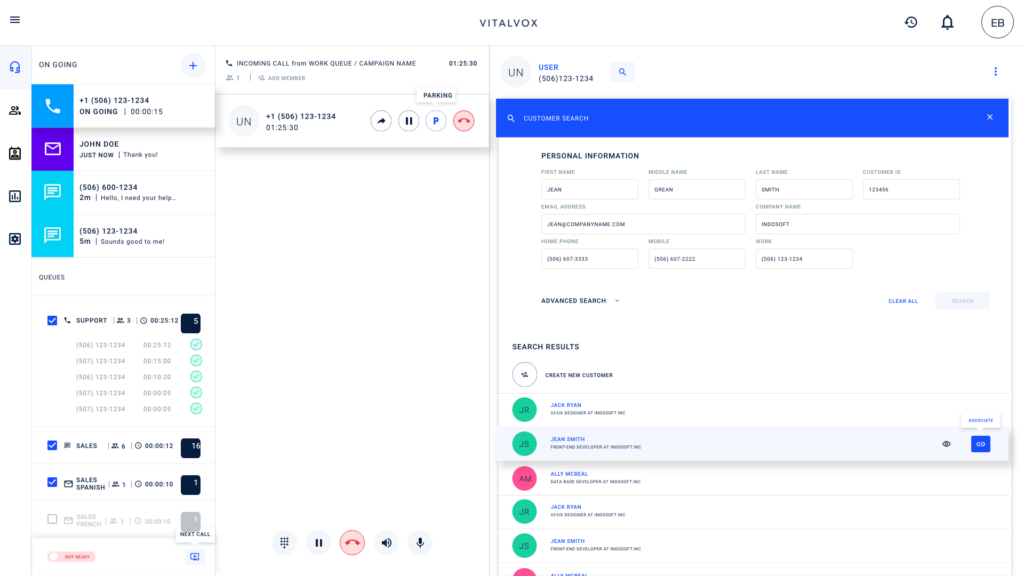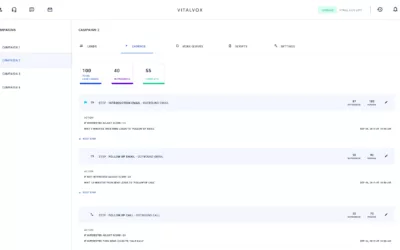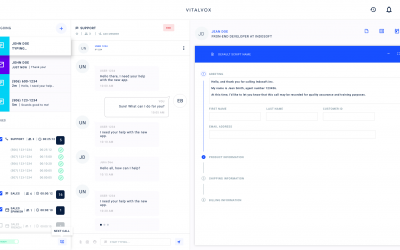Omnichannel Communication Revolution

In today’s digital age, communication has become the lifeblood of businesses, enabling them to connect and engage with customers like never before. The Omnichannel Communication Revolution has transformed these interactions, offering seamless integration across multiple channels for a more cohesive and personalized customer experience.
One powerful approach that has revolutionized the way businesses interact with their customers is omnichannel communication. This strategy has gained significant popularity in recent years due to its ability to provide a seamless and integrated experience across multiple channels. In this blog post, we will explore the concept of omnichannel communication, its benefits, and how it can enhance customer engagement and satisfaction.
Understanding Omnichannel Communication
Omnichannel communication refers to a customer-centric approach that allows businesses to connect and engage with their audience across various channels seamlessly. Specifically, it emphasizes the integration and synchronization of all communication channels to provide a consistent and personalized experience to customers. These channels include websites, social media platforms, email, SMS, mobile apps, and physical stores.
The key differentiator of omnichannel communication is its focus on providing a unified and cohesive experience for customers. Rather than treating each channel as a separate entity, businesses strive to create a seamless transition for customers as they move between channels. Consequently, this ensures that communication remains consistent, relevant, and timely.
Benefits of Omnichannel Communication
Enhanced Customer Experience
Omnichannel communication allows businesses to meet customers where they are. As a result, customers can switch between channels while experiencing consistent messaging and personalization. This approach significantly enhances the overall customer experience and fosters stronger connections between businesses and their audience.
Improved Customer Engagement
By employing omnichannel strategies, businesses can engage with customers in a more meaningful and interactive manner. Whether through social media interactions, personalized email campaigns, or targeted push notifications, businesses can create tailored experiences that resonate with customers. Thus, this increases engagement and builds brand loyalty.
Seamless Integration
Omnichannel communication facilitates the integration of various systems and technologies. Customer data, preferences, and interactions can be synchronized across channels. Therefore, businesses gain a holistic view of each customer’s journey. This data-driven approach allows for more effective targeting, personalized recommendations, and relevant messaging.
Increased Sales and Revenue
By leveraging omnichannel communication, businesses can optimize the customer journey and drive conversions. A consistent and seamless experience across multiple touchpoints guides customers through their buying journey. This ensures a smooth transition from awareness to consideration and, ultimately, making a purchase.
Real-Time Customer Insights
Omnichannel strategies provide valuable insights into customer behavior, preferences, and sentiment. By monitoring customer interactions across channels, businesses can gather real-time data. Consequently, this informs decision-making processes, allowing them to adapt their strategies and meet evolving customer needs effectively.
Conclusion
Embracing omnichannel communication is essential for businesses aiming to stay competitive in today’s fast-paced digital landscape. The Omnichannel Communication Revolution ensures that companies can provide a seamless and integrated customer experience across all platforms. By providing a unified and personalized experience across various channels, businesses can enhance customer satisfaction, drive engagement, and boost sales. Therefore, don’t miss out on the opportunity to revolutionize your customer interactions with omnichannel communication.
See How It Works
Ready to transform your customer communication strategy? Contact us today to learn how our omnichannel solutions can help you achieve seamless and integrated customer interactions. Let’s work together to elevate your business to new heights.
FAQs
Q1. What exactly is “omnichannel communication”?
A: Omnichannel communication means connecting with customers across multiple channels—such as websites, email, social media, mobile apps, and physical stores—in a way that feels seamless and consistent. Instead of managing each channel independently, an omnichannel strategy synchronizes all interactions. As a result, the customer experience remains unified across every touchpoint. (See the blog’s section “Understanding Omnichannel Communication.”)
Q2. Why should a business adopt omnichannel communication?
A: Businesses benefit from omnichannel communication because it enhances customer satisfaction, increases engagement, and simplifies system integration. Furthermore, when everything works together, businesses often see a direct impact on revenue growth. These key points are explored in the blog’s “Benefits of Omnichannel Communication” section.
Q3. What kinds of channels are included in an omnichannel strategy?
A: Typically, omnichannel strategies involve a mix of digital and physical channels. These include websites, email, SMS, mobile apps, social media, and even in-person locations like retail stores. In other words, any channel where customers interact with your brand can be part of the experience.
Q4. How does omnichannel communication improve customer engagement?
A: By offering consistent messaging and personalized experiences at every stage, customers feel more understood and valued. Consequently, this builds trust, increases satisfaction, and strengthens loyalty over time.
Q5. What does “seamless integration” mean in this context?
A: Seamless integration refers to syncing customer data, preferences, and interactions across all channels. Therefore, when a customer switches from one channel to another, the conversation picks up right where it left off—without needing to start over. This is highlighted as a core advantage in the blog.
Q6. Will implementing omnichannel communication increase sales?
A: Yes. When customers enjoy a frictionless, connected journey from awareness to purchase, they are far more likely to convert. As the blog notes, consistent experiences can directly lead to higher sales and long-term growth.
Q7. How can real-time customer insights help a business?
A: Real-time insights enable businesses to monitor customer behavior and sentiment as it happens. As a result, companies can quickly respond, adjust strategies, and deliver highly relevant messaging—boosting engagement and retention. More on this can be found in the blog’s “Real-Time Customer Insights” section.
Q8. Is omnichannel communication only for large enterprises?
A: Not at all. While large enterprises often lead the way in adopting new technologies, small and mid-sized businesses can also implement omnichannel strategies effectively. What’s most important is aligning your tools and processes to support a unified customer journey.
Q9. What are typical challenges when moving to an omnichannel approach?
A: Common challenges include integrating outdated systems, maintaining consistent data across platforms, training teams on new processes, and preserving a unified brand voice. However, with the right plan and technology, these hurdles can be overcome.
Q10. How do we get started with implementing an omnichannel strategy?
A: To begin, audit your existing communication channels and identify any gaps. Next, define your ideal customer journey and choose tools—such as CRM platforms or unified messaging solutions—that support that vision. It’s best to start small, perhaps with two or three channels, and scale based on measurable success.
Categories
- Agent Performance & Training
- AI solutions
- Asterisk
- Business Growth
- Call Center Performance & Productivity
- Call Center Software Platform
- Call Center Technology & AI Integration
- Call Center Training
- Call Center Workforce Management
- Call Monitoring
- Cloud-Based Solutions
- Customer Experience
- Data Security
- General
- Insights
- Integrated Customer Service
- News
- Omnichannel Communication Strategy
- Omnichannel Support
- Quality Assurance
- Tech


